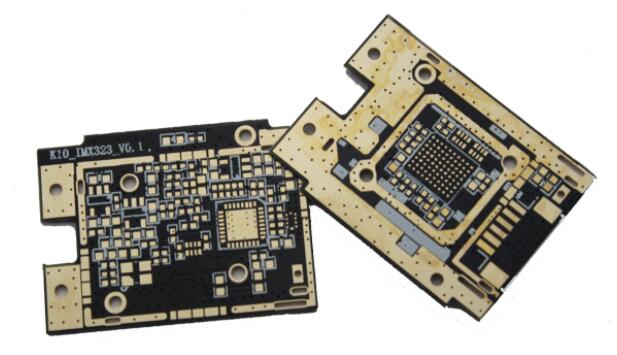The memory structure is simple, basically composed of DRAM IC and PCB board .Therefore, the difference between high-end and low-end memory is mainly reflected in the two.
As DRAMIC, which occupies most of the cost of memory, its importance needless to say. But among the few components of memory, PCB also plays an important role in memory performance.
If we pay attention to the details page of some high-end memory, we often see such statements as 8 layer PCB or 10 layer PCB. So what does this 8-layer or 10-layer PCB stand for? Why does it mean that the memory material is more advanced and the performance is better when it comes to 8 layers or even 10 layers? Let's peel off the PCB today to see what this layer number actually means.
PCB, the full name PrintedCircuitBoard (printed circuit board), is a printed circuit board similar to a printed circuit board. In fact, the actual cable of different lengths is changed into the metal trace of the resin board, which greatly reduces the amount of wire. Use, save space and energy consumption.
As we mentioned earlier, PCB is a circuit board similar to a printing method, so common PCBs are glued together in several layers, and each layer has a resin insulating substrate and a metal circuit layer.

The most basic PCB is divided into 4 layers, the uppermost and lowermost circuits are functional circuits, the most important circuits and components are arranged, and the middle two layers of circuits are the ground layer and the power layer. The advantage of this is that the signal line can be corrected and interference can be better shielded.
Generally speaking, 4 layer PCB can already meet the normal operation of PCB, so the so-called 6 layers, 8 layers, and 10 layers are actually adding more circuit layers to improve the electrical capacity of the PCB, that is, the pressure capacity. Therefore, the increase in the number of PCB layers means that more circuits can be designed internally.
GALAXY HOF2DDR4-4000 memory uses a 10-layer white custom PCB to provide a stable electrical supply for memory operation. In addition, thanks to the blessing of Samsung B-die, it has a strong overclocking capability with overclocking up to 4600MHz+. As a belief, HOF2 DDR4-4000 memory is based on the silver warrior as the prototype of the tough appearance and the dazzling and colorful seven-color breathing light effect, which also adds a lot to it. For players, the HOF II DDR4 series memory with both internal and external excellence is not only the choice of quality, but also the choice of faith.
For memory, when do we need to increase the number of PCB layers? According to the above, it is obvious that the electrical power of the PCB is too strong. When is the voltage and current of the memory PCB strongest? Players who have played overclocking will know that if the memory is to get better performance, it must be pressurized to increase the operating frequency. Therefore, it is not difficult for us to draw a conclusion: when the memory can be used at high frequency or overclocking.
At present, high-end memory frequencies generally start at 3600MHz. In order to ensure safety and electrical stability, 8 layer PCB are basically standard, and some even reach 10-layers. In the same layout of PCB, the performance difference brought by 8 layer and 10 layer PCB is negligible for ordinary users, but for professional overclockers, the latter allows them to achieve higher frequencies.